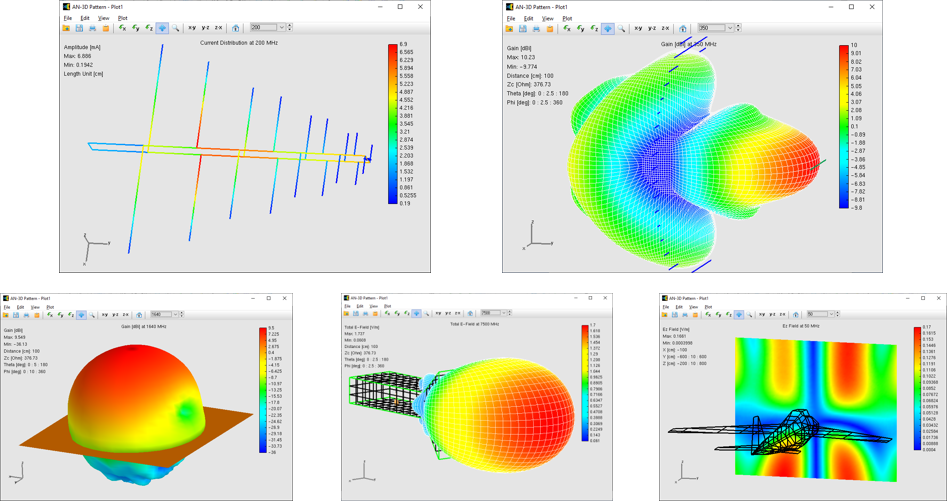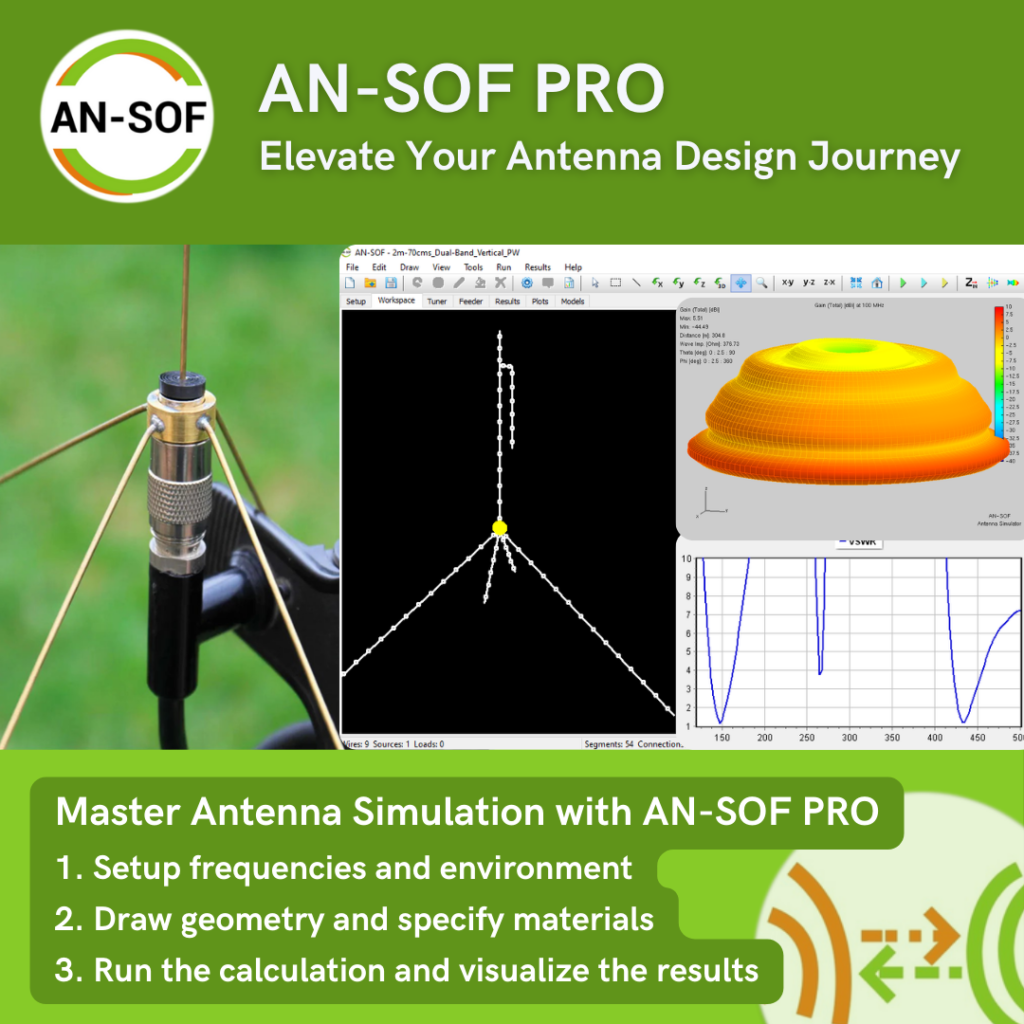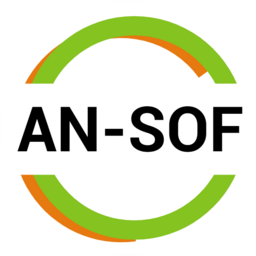
Antenna Simulation Software
AN-SOF is a comprehensive software tool for the modeling and simulation of antenna systems and radiating structures in general. It is based on the Conformal Method of Moments (CMoM) with Exact Kernel, which is the most accurate method to date for modeling wire structures.
Easily draw the geometry of the structure using the mouse, menus and friendly dialog windows. All wires are placed in 3D space where several 3D-tools with mouse support have been implemented, including zoom, motion, and rotation features.
Simulate antennas in three simple steps:
- Setup > Set frequencies, environment, and desired results.
- Draw > Draw geometry, specify materials, and sources.
- Run > Run the calculation and visualize the results.
1. Setup

2. Draw
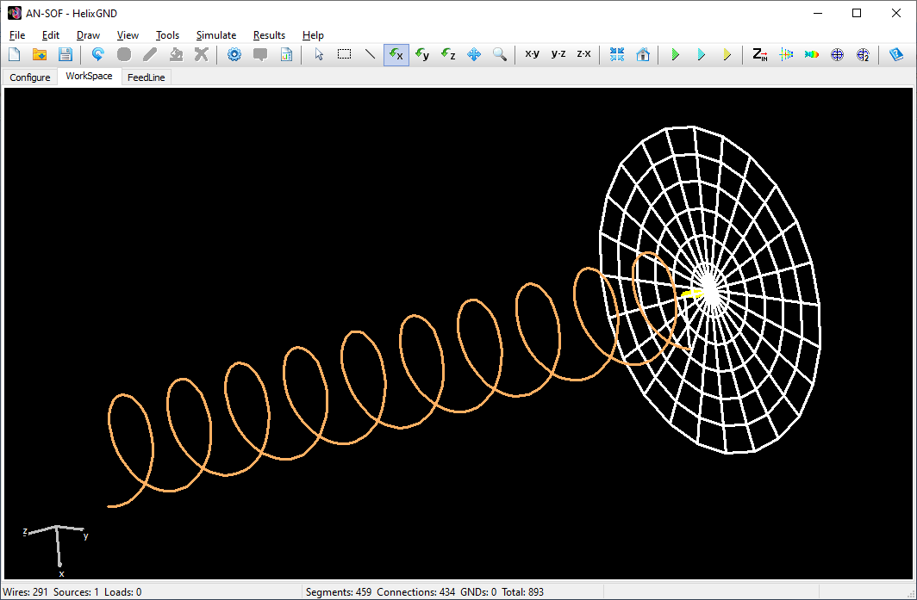
3. Run
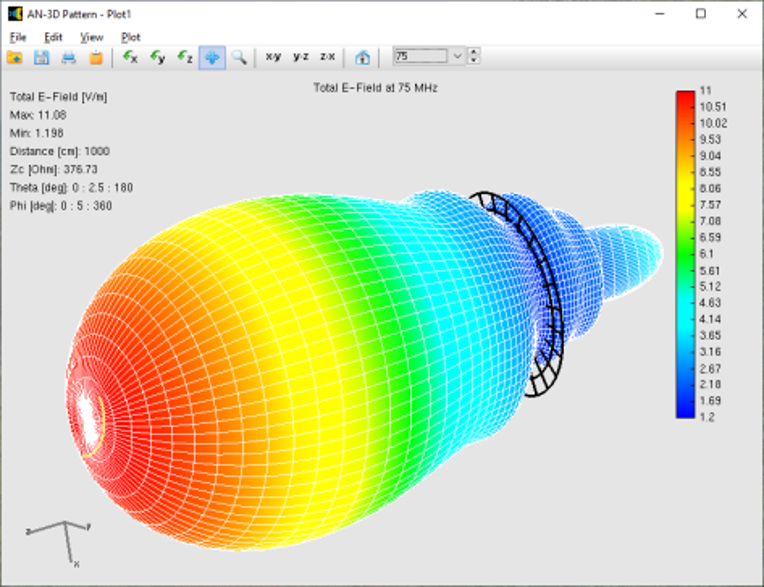
Design transmitting and receiving antennas and get a lot of parameters as a function of frequency: input impedance, standing wave ratio (SWR), efficiency, radiated and consumed powers, gain, directivity, beam width, front to back ratio, radar cross section (RCS), linearly and circularly polarized field components, to mention a few.
The main advantages of AN-SOF are:
- High accuracy: AN-SOF provides high accuracy in simulation results, allowing users to make informed design decisions.
- User-friendly interface: The software has a user-friendly interface that makes it easy for users to design and simulate antennas.
- Wide simulation capabilities: AN-SOF offers a wide range of simulation capabilities, including the ability to simulate antennas of various sizes, shapes, and configurations.
- Time-saving: AN-SOF enables users to design, optimize, and simulate antennas more quickly and efficiently, saving time and effort.
- Improved project success: With AN-SOF, users can ensure the success of their projects by designing and simulating antennas with confidence and accuracy.
AN-SOF has a suite of applications to graph the results of a simulation: AN-XY Chart >, AN-Smith >, AN-Polar > and AN-3D Pattern >.

AN-XY Chart application
A friendly 2D chart for plotting two related quantities, Y versus X. Use AN-XY Chart to plot parameters that depend on frequency, such as currents, voltages, impedances, reflection coefficient, VSWR, radiated power, consumed power, directivity, gain, radiation efficiency, radar cross section, and many more. Also plot the current distribution along wires as a function of position, 2D slices of radiation lobes and near fields as a function of distance from an antenna. Choose different units to display results and use the mouse to easily zoom and scroll graphs.
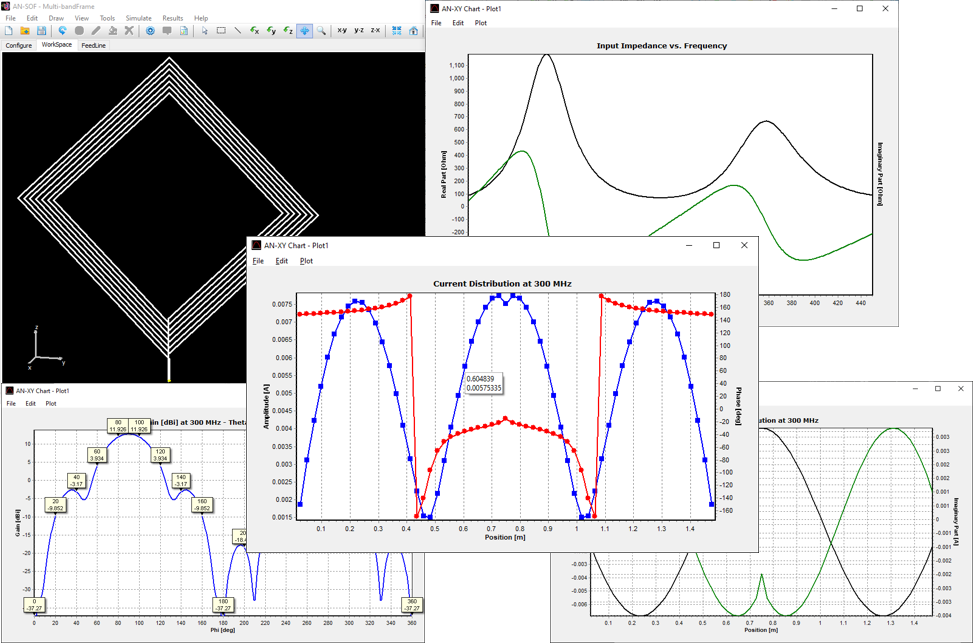

AN-Smith application
Plot impedance or admittance curves on the Smith chart with this tool. Just click on the graph to get the frequency, impedance, reflection coefficient, and VSWR that correspond to each point on the curve. Plots can be stored in independent files and opened later for a graphical analysis with AN-Smith.
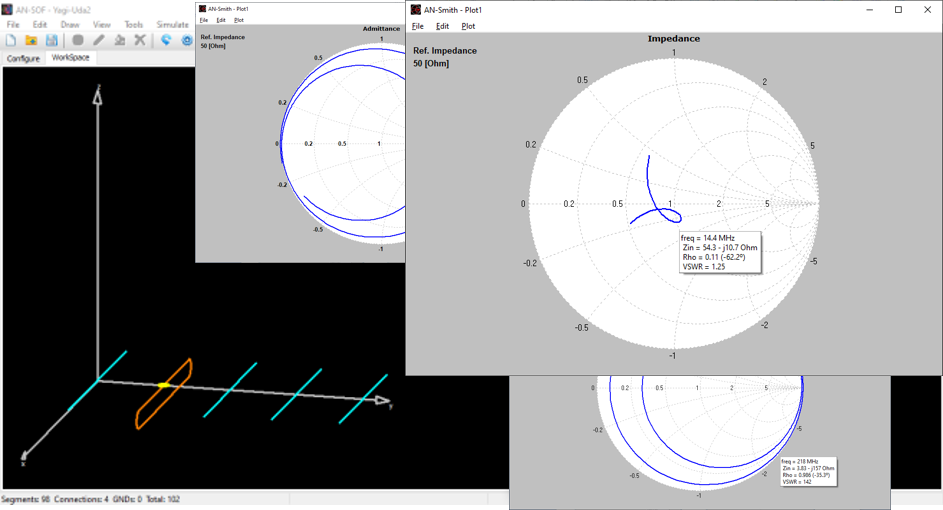

AN-Polar application
Plot on a polar diagram the radiation pattern versus the azimuth (horizontal) or zenith (vertical) angles. The maximum, -3dB and minimum radiation levels are shown within the chart as well as the beam width and front-to-back ratio. Click on the graph to quickly obtain the values of the radiated field. The represented quantities include power density, directivity, gain, normalized radiation pattern, total electric field, linearly and circularly polarized components, and radar cross section (RCS).
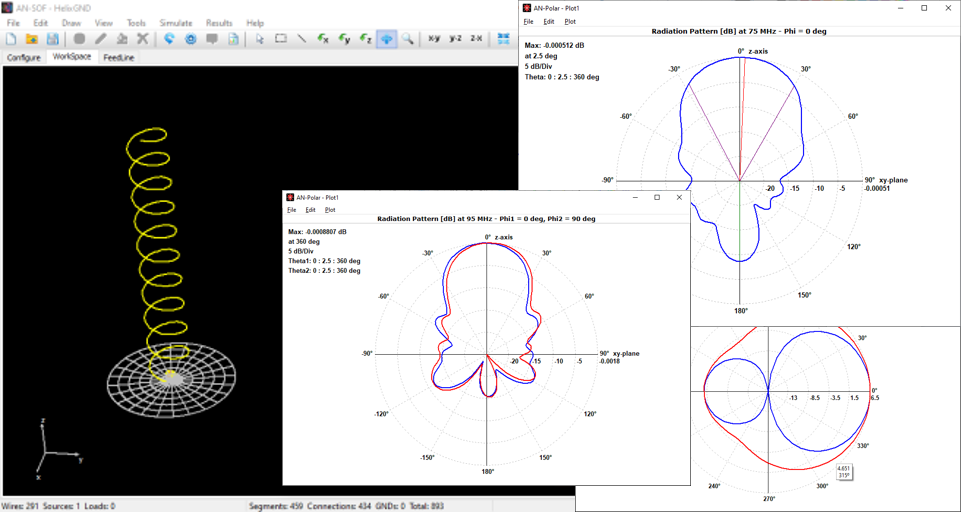
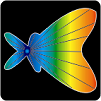
AN-3D Pattern application
Get a complete view of the radiation properties of a structure by plotting a 3D radiation pattern. AN-3D Pattern implements colored mesh and surface for the clear visualization of radiation lobes, including a color bar-scale indicating the field intensities over the lobes. Quickly rotate, move and zoom the graph using the mouse. The 3D radiation pattern can be superimposed to the structure geometry to gain more insight into the directional properties of antennas.
The represented quantities include the power density, normalized radiation pattern, directivity, gain, total field, linearly and circularly polarized components, and radar cross section (RCS). Choose between linear or decibel scales. Display near fields as color maps in the proximity of antennas in three different representations: Cartesian, cylindrical and spherical plots. Also plot the current distribution on the structure as a colored intensity map.
